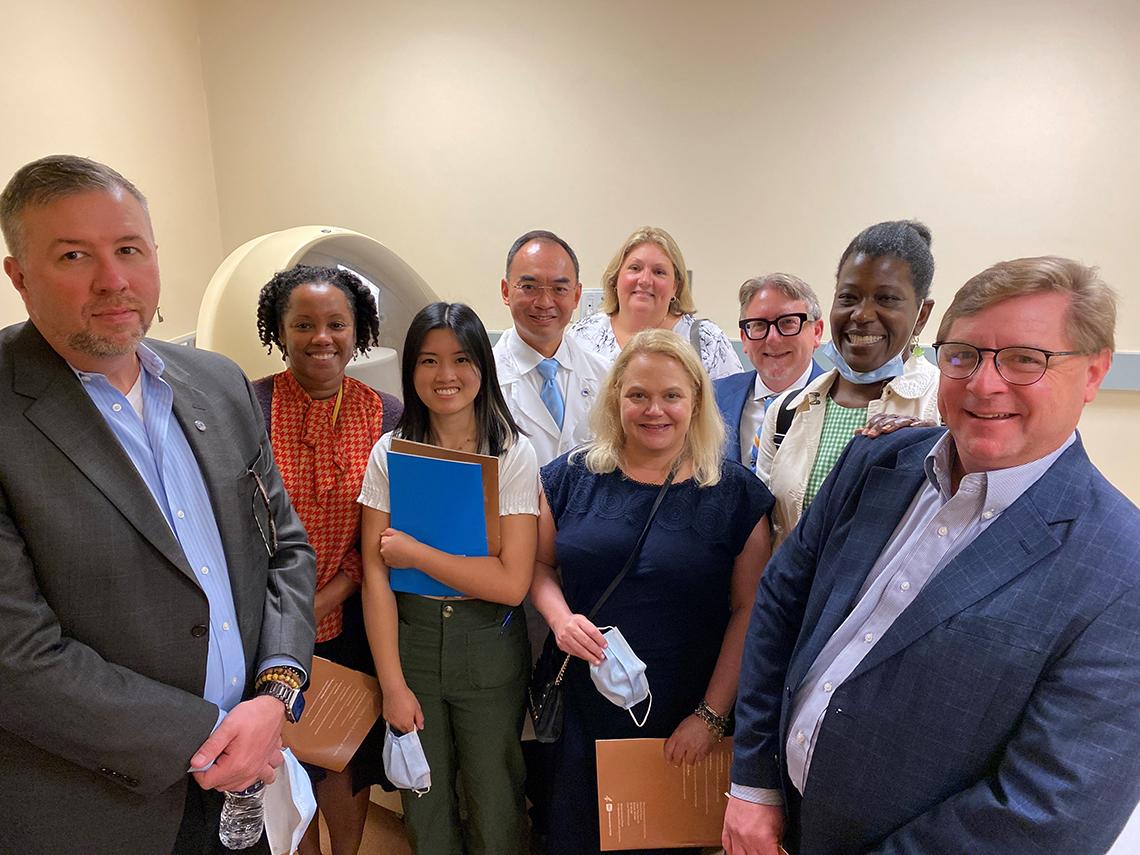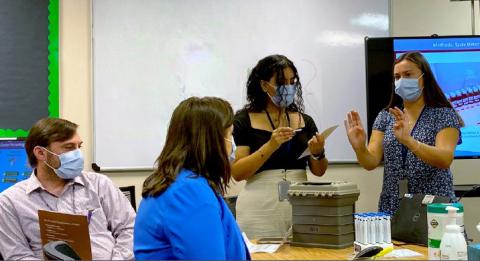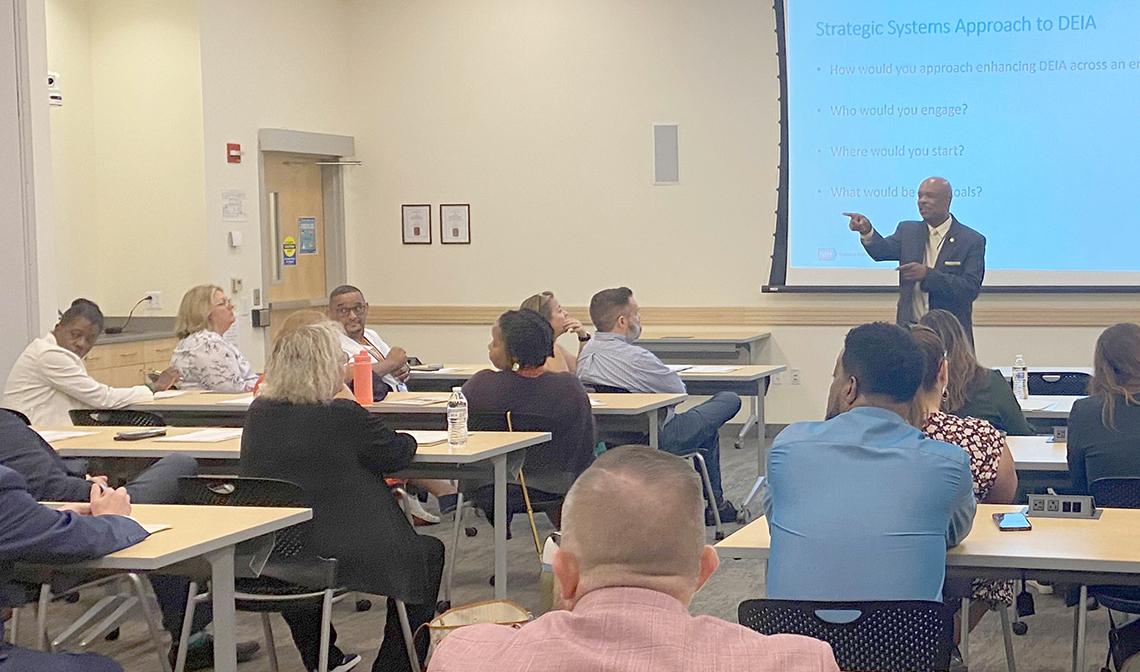Partnership for Public Service Explores DEIA Strategies, Visits NIH Labs

Photo: JACQUELINE ROBERTS
The Excellence in Government fellows from the Partnership for Public Service recently visited NIH’s Bethesda campus. The group of 30 professionals received an overview of NIH and discussed various aspects of diversity, equity, inclusion and accessibility (DEIA) with NIH leadership. They also visited four labs and clinics in the Clinical Center (CC).
The partnership is a nonprofit, nonpartisan organization that aims to build a better government and stronger democracy.
The visit began with a presentation led by Dr. Alfred Johnson, NIH deputy director for management, and Julie Berko, Office of Human Resources director, about NIH and its strategic systems approach to DEIA. Johnson emphasized that NIH is working to “make sure we have the workforce of the future.”
He explained that while single organizations cannot accomplish everything at once, individual components are able to make a difference.

Photo: myranda tarr
When asked for advice in making systemic changes and working with leadership, Berko underscored how “relationships are your number one currency.” Johnson added that one must be “passionate, proactive and persevere.”
Participants broke into small groups and toured labs and clinics within four institutes—the National Institute of Diabetes and Digestive and Kidney Diseases (NIDDK), National Cancer Institute (NCI), National Institute on Alcohol Abuse and Alcoholism (NIAAA) and National Eye Institute (NEI).
The group visiting the NIDDK metabolic clinical research unit was led by co-director Dr. Kong Chen who explained how the body generates heat at rest, during exercise and in cold environments.
Dr. James Gulley, co-director of the Center for Immuno-Oncology (CIO) and NCI clinical director, led another group to CIO laboratories where he explained his work in cancer immunotherapy.
A third group visited NIAAA’s section of sensory science and metabolism clinical unit, led by family nurse practitioner Dr. Carolyn Allen who provided a demonstration of some smell and taste tests the lab is conducting.
The last group joined Dr. Emily Chew, director of the Division of Epidemiology and Clinical Applications, where they discussed the use of eye images as a window into the health of the patient, including detecting the risk of heart disease and dementia. The visitors also viewed retinal images of an NEI patient.
An Inside Look at Smell, Taste and Obesity

Photo: myranda tarr
On the NIAAA stop, Allen—along with two postbacs—explained the various tests their clinical unit administers to volunteer participants.
One protocol uses measures that test the sense of taste and smell in people with obesity versus people without obesity.
“We’re also trying to see whether people who have alcohol use disorder have lower sense of smell or taste compared to people who are moderate drinkers or don’t drink at all,” added Marinza Marzouk, a postbac in the clinical unit.
One partnership fellow asked if the lab is looking at whether obesity affects a person’s sense of smell and taste or whether a person’s sense of smell and taste impacts their propensity for obesity.
“It’s the chicken and the egg,” answered Marzouk. “That’s what we’re trying to identify.”
Several individuals in the partnership group remarked on enjoying the inside look into the four ICs and mentioned finding the NIH visit informative and interesting.
